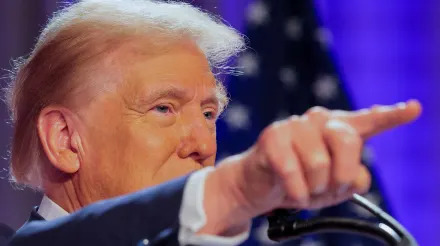By Kevin Buckland
TOKYO (Reuters) -The euro jumped along with risk-sensitive currencies like the Australian dollar on Monday after President Donald Trump backed down from threatened 50% duties on European Union shipments from June 1, after the bloc asked for time to "reach a good deal."
The dollar continued its slump against a broad swathe of currency peers as Trump's policy reversals, as well as his sweeping spending and tax-cut bill currently in legislation, turned investors off from U.S. assets.
"The 'Sell America' theme, which obviously was the dominant theme back in April, is back on show," said Ray Attrill, head of FX research at National Australia Bank.
"Markets have probably taken the view - and probably rightly so - that where we land eventually on a tariff situation between the U.S. and the EU is not going to be at 50%, but how we get there is frankly anybody's guess at the moment."
The euro climbed as much as 0.55% to reach $1.1418 for the first time since April 29.
The Aussie jumped 0.58% to $0.6537, a level not seen since November 25. The New Zealand dollar soared 0.75% to the highest since November 7 at $0.6031.
Sterling advanced as much as 0.38% to scale its highest level since February 2022.
The safe-haven yen and Swiss franc were overall weak as market sentiment improved, but they still appreciated against the embattled U.S. dollar.
The greenback slipped as much as 0.24% to 142.23 yen, the lowest level this month, and edged to a 2-1/2-week low of 0.8193 franc.
The U.S. dollar index, which tracks the currency against six major rivals, sank 0.3% to 98.813, extending a 1.9% tumble from last week.
Trump announced the decision to put off EU tariffs until July 9 on Sunday, following a call with European Commission President Ursula von der Leyen, who asked for more time to reach an agreement. July 9 is the end of the 90-day pause on Trump's April 2 "Liberation Day" levies on the EU and most other trade partners.
The de-escalation just two days after Trump issued the threat is a stark reminder of how suddenly U.S. trade policy can turn, even as it encouraged investors that deals can be struck and calmed worries about a global downturn.
In a possible nod to fiscal worries among investors, Trump also said on Sunday that his sweeping spending and tax cut bill is likely to see "significant" changes in the Senate.
The House of Representatives' version of the tax bill is calculated to add about $3.8 trillion to the federal government's $36.2 trillion in debt over the next decade, according to the Congressional Budget Office.
"What seems clear from the reconciliation bill ... is that Trump and (Treasury Secretary Scott) Bessent have shifted tactics, swiveling hard from fiscal conservatism and reduced spending to an outright pro-growth policy stance," said Chris Weston, head of research at Pepperstone.
"It is fast becoming a consensus view that the USD is on the path to a multi-year decline."





